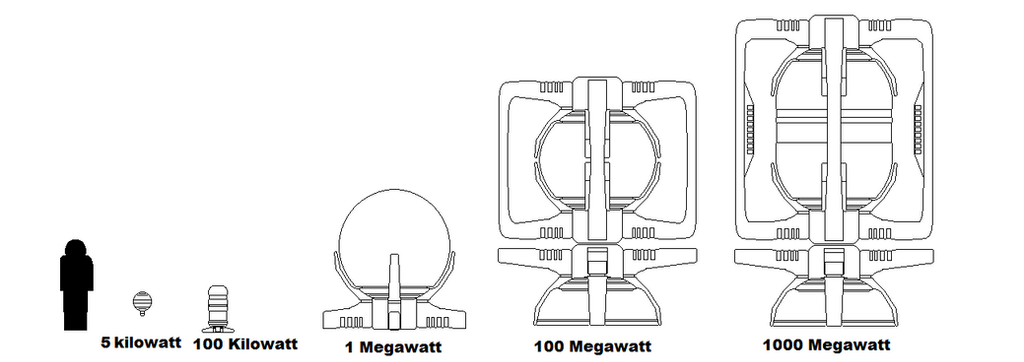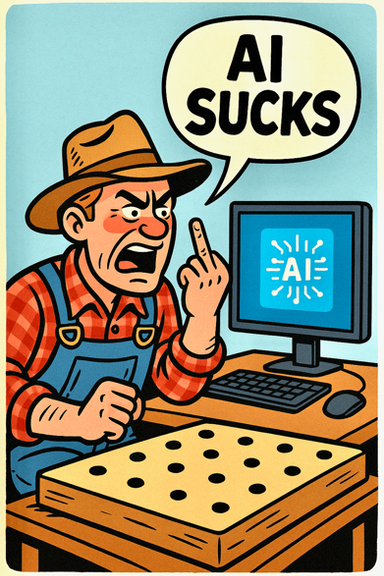HOME | DD
 wbyrd — Quantum resonance reactors 'Q-Paks'
wbyrd — Quantum resonance reactors 'Q-Paks'

Published: 2014-03-20 17:43:33 +0000 UTC; Views: 1797; Favourites: 23; Downloads: 41
Redirect to original
Description
Quantum resonance reactorsThe use of finely modulated electromagnetic waves to initiate vibrations in matter at the quantum level was an accidental discovery in 2017 on earth. While still in it's infancy the practical applications of the technology were obvious. by causing fluctuations at the quantum level the effect was greatly amplified at the atomic and molecular level.
This allow a small amount of input energy to cause a large spike in output energy in the form of heat and charged plasma. However until later in the century the net return on the input power was only 4% enough to sustain a stable resonance reaction but far to inefficient to provide useful amounts of power due to the cost of cooling, required to allow the initiators to become super conductive.
with the discovery of high temperature ( over 100 degrees Celsius ) near superconductor, and then later High temperature superconductors the first practical QR reactors came online in Salt lake City Nevada in the year 2042 Just in time to be severely damaged by the eruption of Yellowstone calderas.
However when technology from captured Najuhlim vessels, after the first battle of New York, were examined and the superconducting materials reverse engineered. the size and efficiency of "Q-paks" became more than affordable.
The technology played a key part in the defense of earth against the first Najuhlim incursion by powering a number of earth to orbit mass drivers, particle beams and pulse laser systems. the small size, and high yield of a portable Q-Pak" quantum reactor allowed truck mounted weapons to remain highly mobile and avoid detection and destruction by low level Najuhlim strikes. In fact dozens of the "Interstate" and "Autobahn" guns and their trailer mounted reactor paks are displayed at museums and memorials around the globe.
Modern Q-paks are small enough to fit in a medium sized beer keg, and still provide 100 Kilowatts an hour burning approximately 10 dollars worth of fuel per kilowatt per hour. If filtered water is used as a fuel source then the cost drops down to .1 dollars per kilowatt per hour.
Most q-Pak reactors are fixed and sealed systems. the reactor is monitored and maintained by a service provider and replace at the end of it's standard service life for a fairly modest fee. In areas where solar, thermal or wind generated power is not feasible a standard Q-Keg provides power at an annual rate of .25 dollars per kilowatt hour. Use of storage bays, solar and wind turbines can supplement power to a local grid reducing the average cost to even lower levels if properly installed and operated.
Most vehicles and commercial aircraft use a Q-Pak to provide electrical power to small motors, or compressors that propel the vehicle. In some cases the q-Pak is vented to allow reaction mass to be channeled into the reaction chamber where it is superheated and charged creating plasma. this plasma is then fed into a secondary expansion chamber where local atmosphere is mixed with the plasma producing a highly efficient and clean burning means of direct propulsion.
Exhaust/pollution hazards
typical Low intensity units do not produce much in the way of toxic substances. the fuels are usually water, hydrogen or oxygen extracted from the local environment. If hydrocarbons, or carbon compounds are used the production of Co2 and Co are hard to eliminate completely.
However due to the small amounts of material needed to produce power the exhaust issues are far less severe than conventional fossil fuel powered systems, and the radioactive output of he system is lower than the average microwave.
Hi-intensity, and fast cycle QR reactors however are different creatures all together. the typical fuel is finely milled carbon powder, or exo-carbon isotopes ( carbon zed ) which produce dangerous amounts of alpha and beta radiation, as well as exotic particles shed by the carbon zed when excited by the resonance field.
as a result fast cycle or high intensity systems require an integrated system of shielding, and electromagnetic and plasma based baffles to capture and redirect harmful particles and radiation into capture and sequestration devices.
Most systems have a secondary power supply installed in the event of a shut down or miss cycle of the system which interrupts power to the containment systems. this allows the containment fields to remain active long enough for dangerous levels of radiation or exotic particles to dissipate before the field collapses and releases any remaining hazards
Noise and Electromagnetic signature
A Q-Pak generates a low to high pitched hum, and whistle when operating this is seldom an issue when compared to gas turbines, or diesel power plants, but it does require some sound baffling insulation in areas where the noise might be distracting or disruptive.
The electromagnetic noise generated by a functioning Q-Pak is of more concern. it is powerful disruptive to many forms of electronics, and easily detected and tracked by any modern electronic warfare system. EM-noise cancellation and baffling systems must be added to any unit operating near sensitive equipment, and is a requirement on military vessel since many modern guided weapons are designed to home in on active Quantum reactors as a means of guidance
Life-cycle
The average functional life of a unit operated properly and receiving annual inspection and repair, is over 20 years. However to streamline service, and insure safe operation most units are refurbished and rebuilt after 1-4 years of continuous operation
to extend the life cycle of a unit, the system is often connected to a high capacity storage system which is charged, by the unit, then discharged by devices connected to the power grid this allows the unit to produce power at low levels over a long period if the drain on the system is low to moderate, then engage fully at peak loads.
Related content
Comments: 6

thank you.
Seeing some of the designs you do..I have to say I'm grateful for the compliment.
👍: 0 ⏩: 1

I like the retro look. the alod style sci-fi models and illustrations are one of my favorite looks.
I'll be honest and say most of my creations are not planned out. I start doodling and something evolves from a rough shape. or I create some section that I like working on one drawing. It then inspires me to use it for the base of another object.
👍: 0 ⏩: 0

Wow so is it alright if I modify this and use it in my Stargate Scenario?
👍: 0 ⏩: 1

feel free, just give me some credit...and link to yer little scenario so I can watch.
👍: 0 ⏩: 1

Oh I will give you credit but the scenario is over phones or Skype for ease of communication but I will be doing art for it and I will link you also thank you for your permission dude
👍: 0 ⏩: 0


























